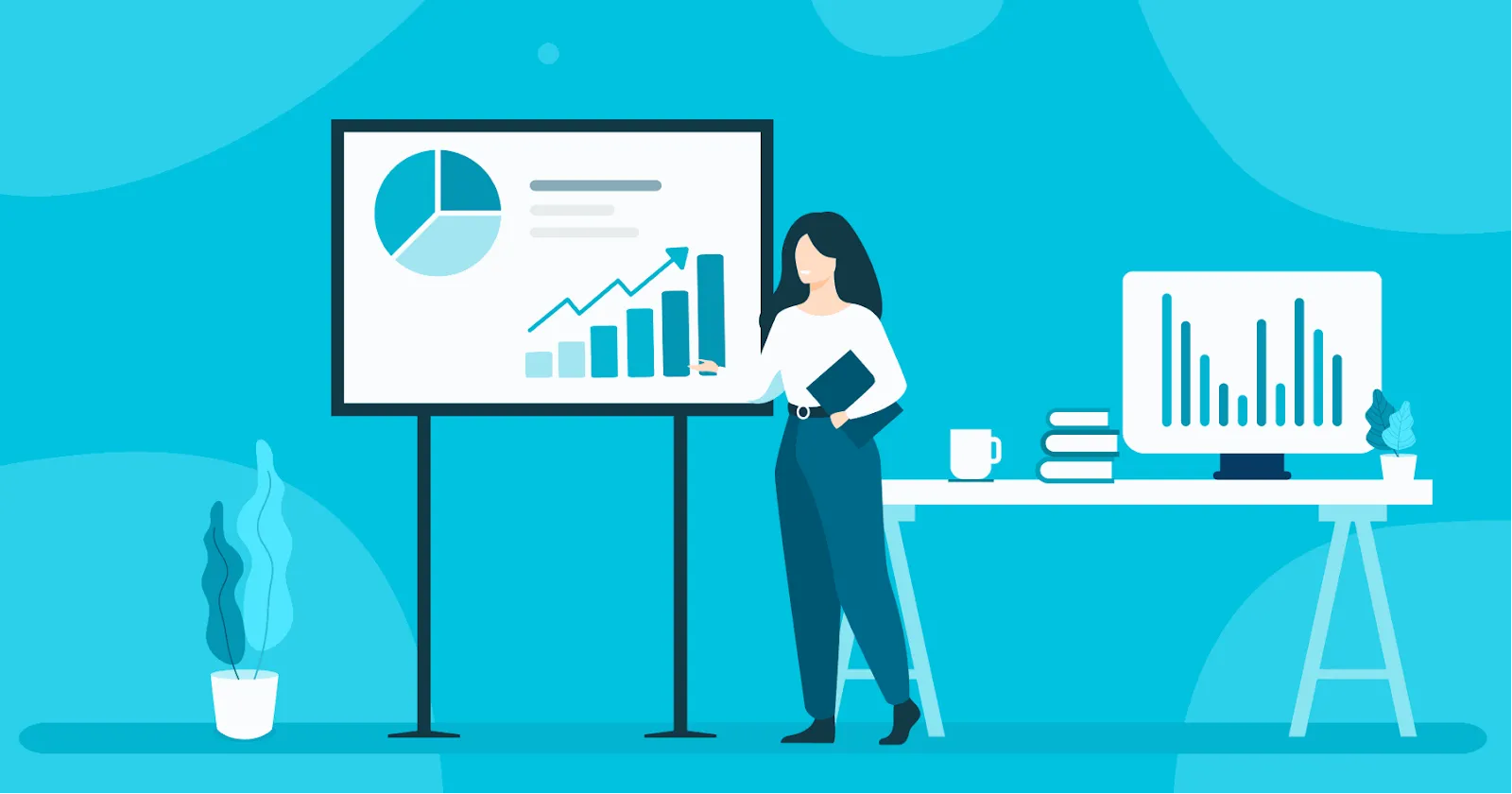Sales Development Representatives, or SDRs, play a critical role in the success of any B2B sales organization. They are responsible for generating leads and qualifying potential customers.
It's no secret that salespeople are critical to Alore CRM's success. We have built new tools and processes to empower our own salespeople over the last many years, including the successful Sales Engagement Platform.
In this blog post, we will discuss what Sales Development Representatives do and why they are important to the success of any business.
We will also provide tips on how to find and hire the best Sales Development Representatives for your company.
Who exactly is a B2B sales development representative?

A business-to-business sales development representative is a professional who seeks out and cultivates relationships with corporate decision-makers in order to market a product or service.
B2B sales reps employ a variety of sales abilities, strategies, and tools to acquire the trust of potential B2B buyers and offer solutions that are relevant to these buyers' pain areas and goals while following a playbook based on their team's sales process.
A sales development rep focuses on finding and qualifying potential customers to support the sales team. The job description of a sales development representative includes prospecting, lead generation, and setting appointments.
To encourage prospects to discover the value of their solution, most B2B salespeople use sales calls, email, video conferencing, and social media messaging.
SDRs excel at both inbound and outbound prospecting, tailoring their approach based on lead type. SDRs create sales opportunities by reaching out to decision-makers and scheduling initial meetings.
Is there a variety of B2B sales representatives?

The phrase "sales rep" refers to a broad category of sales professionals, mostly to individual individuals who make up the majority of a sales organization.
Salespeople can be distinguished by their work environment (inside sales or outside sales), tenure or skill level (junior sales vs. senior sales), or area of specialization (outbound or inbound; business development or sales development or technical sales or lead development).
Depending on the organization, Account Executives may be classified as "sales reps, however, for the sake of this article, we will only be discussing sales development representatives (SDRs).
While SDRs focus on new leads, account managers often work with existing customers to ensure retention.
What does a regular day in the life of a B2B sales representative look like?

B2B sales teams coordinate their daily operations, roles, and activities in conjunction with a pre-designed sales process and a structured stream of prospective customers termed as a sales pipeline.
The sales development representative role is crucial for nurturing leads and building a robust sales pipeline. A typical day for a B2B sales representative consists of engaging leads in the pipeline through one or more channels (web, mobile, social media, email, etc).
Salespeople will perform prospect research, make sales calls, schedule meetings with clients, and send follow-up emails on any given day. A role as an SDR is an excellent starting point for anyone pursuing a sales career.
Why are B2B sales representatives important?
While not all sales representatives are quota-carrying sellers, every sales representative is a customer-facing professional who contributes directly to relationship-building, spectrum growth, and revenue creation.
The major responsibility of sales representatives is to keep their pipelines filled and flowing. The sales pipeline shows a company's health, profitability, and potential expansion. Sales executives often rely on SDRs to provide well-qualified leads for closing deals.
Because B2B salespeople own the pipeline, the success of B2B businesses can be determined by their performance. Effective SDR strategies contribute directly to top-line revenue growth by driving more qualified leads into the pipeline.
Without experienced B2B sales agents to guide prospects through the sales process from start to finish, revenue opportunities fall through the cracks and maximum profitability is tough to attain.
Sales executives report higher efficiency when SDRs handle the initial outreach and qualification stages. Business development representatives often work alongside SDRs to identify new opportunities in target markets.
SDRs set the stage for closing business by identifying and qualifying high-potential prospects. SDRs play a critical role in moving leads smoothly through the sales funnel.
10 Key Characteristics of a B2B Sales Development Representative

Key skills for SDRs include communication, adaptability, and resilience. Learn them and a few more in detail below:
1. Exceptional Communication Skills
Good communication is the backbone of being an SDR. You must clearly explain your company’s product or service to potential buyers. But communication isn’t just about talking—listening is just as important.
What to Do:
- Use simple, clear language when speaking or writing emails.
- Practice active listening during sales calls. This helps you understand the customer’s needs.
- Cold calls remain a key tool for SDRs to introduce their products and services to new prospects.
Clear communication builds trust and makes prospects feel valued. SDRs with strong communication skills are more likely to turn leads into qualified customers.
2. Strong Research Abilities
To succeed as an SDR, you need to know your audience. Researching potential customers and understanding their businesses helps you tailor your approach.
What to Do:
- Use tools like LinkedIn Sales Navigator to gather information about leads.
- Research their industry, challenges, and goals before making contact.
When you know your prospects, you can make personalized pitches. This increases the chance of closing deals and filling your sales pipeline.
3. Resilience and Persistence
Sales isn’t easy, and SDRs often hear “no” more than “yes.” Staying motivated and pushing through rejection is crucial.
What to Do:
- Set daily goals, like the number of calls or emails to send.
- Learn from each rejection and improve your approach.
- Resilient SDRs keep the sales process moving. Persistence shows potential customers that you care about their business, which can lead to success.
The sales development rep role requires a mix of research, communication, and resilience to succeed.
4. Active Listening Skills
Active listening means paying attention to what others are saying. SDRs must listen carefully to understand what potential customers need.
What to Do:
- Focus on the speaker without interrupting.
- Take notes during calls to remember key details.
- Repeat back important points to show you understand.
Active listening builds trust. When customers feel heard, they are more likely to stay engaged in the sales process. It also helps SDRs gather important insights for follow-ups.
5. Goal-Oriented Mindset
A strong focus on goals keeps SDRs on track. Setting clear targets helps them work efficiently and stay motivated.
What to Do:
- Break down big goals into smaller, daily tasks.
- Use tools like CRM software to track progress.
- Celebrate small wins to stay positive.
Having clear goals drives results. SDRs who track their efforts are more likely to fill the sales pipeline with qualified leads and reach their targets.
6. Adaptability to Change
Sales strategies change often. SDRs must adjust quickly to new tools, markets, or customer needs.
What to Do:
- Stay open to learning new skills or methods.
- Use feedback from managers or customers to improve.
- Practice handling objections to build confidence.
Being adaptable helps SDRs handle challenges. This flexibility ensures they remain effective even when the sales process changes.
7. Deep Product and Industry Knowledge
Understanding your company’s product or service is key. Knowing your industry helps you talk confidently with potential customers.
What to Do:
- Learn the features and benefits of your product or service.
- Stay updated on industry trends by reading news and reports.
- Practice explaining your product in simple terms to anyone.
Customers trust SDRs who sound confident and knowledgeable. When you know your product and industry, you can answer questions and offer helpful solutions.
8. Emotional Intelligence (EQ)
Emotional intelligence means understanding and managing emotions—yours and others’. It helps SDRs connect with potential customers.
What to Do:
- Practice empathy by listening carefully to what customers say.
- Stay calm when facing challenges, like objections or rejections.
- Build relationships by showing genuine interest in the customer’s needs.
Strong emotional intelligence creates trust and rapport. Customers are more likely to open up and share their concerns when they feel understood.
9. Tech-Savviness
SDRs use many tools to manage their work. From CRM software to sales automation platforms, being comfortable with technology is a must.
What to Do:
- Learn how to use CRM tools like Salesforce or HubSpot.
- Use email tracking tools to monitor customer engagement.
- Explore LinkedIn Sales Navigator to research potential customers.
Tech-savvy SDRs save time and work more efficiently. The right tools help you organize your leads, track your progress, and close more deals.
10. Strong Problem-Solving Skills
Problem-solving is an essential skill for Sales Development Representatives. Every day, SDRs face challenges, such as overcoming objections or finding solutions for potential customers’ needs.
What to Do:
- Understand the Problem: Listen carefully to your customer. Ask questions to know their challenges.
- Think of Solutions: Match their problem with how your product or service can help.
- Stay Calm Under Pressure: Problems happen. Focus on finding answers instead of getting frustrated.
Strong problem-solving builds trust. Customers feel confident when you help them solve their issues. This skill also improves the sales process and helps close deals.
How do salespeople deal with obstacles in the B2B purchase process?

B2B sales are challenging and may necessitate premium price points. Many touchpoints, numerous decision-makers, and various channels are usually required for a single transaction.
Furthermore, commercial decision-makers are often well-informed and are courted by a variety of competitors.
The sales process can be lengthy and back-and-forth and the rep's responsiveness can frequently be the difference between a transaction and a no-deal situation.
Personal attributes, selling abilities, sales tools, organizational support, and an efficient B2B sales strategy help sales agents withstand the rigorous climate of B2B selling.
Sales Hacker has produced a comprehensive list of sales abilities and attributes that can assist salespeople in overcoming the rigors and problems of selling.
Empathy, social selling, and dispute resolution are some of the most important attributes and talents that sales representatives must possess in order to flourish in their careers.
A dedicated sales operations and/or sales enablement team can considerably aid sellers in learning and mastering these abilities.
Sales professionals use a variety of sales tactics depending on their target customers and the specific B2B sales cycle, frequently iterating playbooks to enhance win rates and accelerate the process.
Solution Selling, the Challenger Sale, and account-based selling are some of the more prevalent strategies utilized by B2B sellers.

Meanwhile, sales tools have evolved throughout time, with the most cutting-edge solutions now relying on artificial intelligence, machine learning, and data analytics.
Adoption of technology is crucial for a sales team to decrease process inefficiencies and increase revenue performance. However, simply having a CRM is insufficient.
To gain a competitive advantage, a B2B team should methodically construct a comprehensive sales enablement stack that includes a sophisticated sales engagement platform.
Hiring B2B sales representatives

Because a company's success is dependent on its sales performance, recruiting knowledgeable, trainable, and passionate B2B sales reps is important.
In today's talent market, sales companies and recruiters should prioritize selecting the appropriate individual from the start.
The explanation is simple: lousy hiring causes significant damage over time.
- Consider the following suggestions to reduce the likelihood of choosing a substandard candidate:
- Form a team to recommend the best applicant profile for your sales team.
- Use recruitment solutions such as an application reporting system to do the heavy lifting.
- Execute in-depth personal and professional analysis on the candidates who have been shortlisted.
- It is never a good idea to let desperation compel you to hire an incompetent individual.
- Set up preliminary phone interviews to do basic evaluations.
- Partner with reputable third-party sales recruiters if necessary.
The average base salary for SDRs varies depending on location, industry, and experience.
A Good Sales Candidate vs. a Bad Sales Candidate
Here are some qualities to look for in both good and terrible candidates:
- Good applicants are enthusiastic about their work. Poor applicants display a lack of enthusiasm and motivation.
- In their social media profiles, good candidates demonstrate tact and respect. Candidates who are unconcerned are bad.
- When good candidates leave their positions, they leave a great legacy.
- Bad candidates can change jobs whenever they choose.
- Great applicants are concerned about their abilities and demonstrate that they are trainable. Poor candidates act as if they don't need to improve in any way.
- Good salespeople accept full responsibility and take ownership of their roles. Poor candidates place blame on others for their shortcomings.
Essential Tools for B2B SDRS

1. Customer Relationship Management (CRM) Software
CRM software stores customer details, interactions, and sales data in one place. Popular options include Salesforce and HubSpot.
With CRM, SDRs can organize leads, track communication, and follow up with potential customers. It keeps everything in one spot, making the sales process easier to manage.
How to Use It:
- Add every new lead to the CRM.
- Track emails, calls, and meetings with the software.
- Use reports to check your progress and spot areas to improve.
Lead qualification ensures that SDRs focus on prospects most likely to convert into paying customers.
2. Sales Engagement Platforms
Sales engagement platforms, like Outreach or SalesLoft, help SDRs send emails, schedule calls, and automate follow-ups.
These platforms save time by automating tasks. They also track how prospects respond, so SDRs can focus on the most interested leads.
How to Use It:
- Create email templates for outreach.
- Schedule calls directly through the platform.
- Use analytics to see which messages work best.
“Streamline Your Outreach with Alore’s Drip Campaigner! Sign Up Today!”
3. Lead Generation Tools
Lead generation tools, like LinkedIn Sales Navigator, help SDRs find new prospects. These tools show valuable data about potential customers, like their job role or company size.
Finding the right leads means better chances of closing deals. These tools let SDRs focus on decision-makers and businesses that fit their product.
How to Use It:
- Search for leads based on location, industry, or job title.
- Save lists of potential customers for outreach.
- Use insights to personalize your approach.
4. Email Tracking Software
Email tracking software helps sales development representatives (SDRs) monitor who opens their emails and clicks on links. Tools like HubSpot and Mailtrack show if your prospects are engaging with your messages.
Knowing if someone opens your email means you can follow up at the right time. This increases your chances of connecting with potential customers. It also saves time by focusing only on interested prospects.
How to implement it:
- Choose a user-friendly tool like Yesware or Mailtrack.
- Connect it to your email account.
- Track metrics like open rates a
- nd clicks to prioritize follow-ups.
“Take the Stress Out of Email Warm-ups – Try Alore! Click to Learn More.”
5. Call Analytics and Dialers
Call analytics software tracks the performance of sales calls. Dialers help SDRs make quick calls without manually dialing numbers. Examples include RingCentral and Aircall.
Call analytics shows you what works during conversations. You can improve your pitch based on data. Dialers save time by automating the dialing process, so you can contact more leads in less time.
How to implement it:
- Set up a dialer with your phone system.
- Use call recording features to review conversations.
- Analyze call metrics like duration and success rate to improve your strategy.
6. Proposal and Document Management Tools
These tools help SDRs create, send, and manage sales documents like proposals or brochures. PandaDoc and DocuSign are popular choices.
Keeping track of documents is essential for staying organized. These tools ensure that your documents are professional and easy to share. They also speed up the signing process with e-signatures.
How to implement it:
- Use templates for creating documents quickly.
- Share documents directly through the tool.
- Track when prospects view and sign your proposals for timely follow-ups.
7. Collaboration and Communication Tools
Collaboration and communication tools help SDRs work efficiently with their teams. These include platforms like Slack, Microsoft Teams, or Google Workspace. They make it easy to share updates, files, and ideas.
SDRs often work with sales teams, managers, and other departments. Quick communication ensures everyone stays on the same page.
For example, when working on a sales pipeline, SDRs can use these tools to update progress or get feedback. This avoids delays and keeps tasks organized.
How to implement them:
- Choose a tool: Pick one that suits your team's needs. Slack is great for instant chats, while Google Workspace offers file sharing and document collaboration.
- Set up channels: Create specific channels for tasks like lead management or sales process updates.
- Train your team: Ensure all members know how to use the platform effectively. Sales managers guide SDRs by providing training and ensuring alignment with the overall sales process.
These tools save time and help SDRs focus more on building relationships with potential customers. Collaboration with sales team members helps SDRs understand customer needs and refine their outreach strategies.
8. Sales Analytics Tools
Sales analytics tools, like Salesforce or HubSpot, provide data-driven insights. They track metrics such as lead conversions, response rates, and revenue generation.
Data helps SDRs understand what works and what doesn’t. For example, if an SDR notices fewer responses from cold emails, they can adjust their strategy. Analytics tools also help sales teams forecast revenue and improve decision-making.
How to implement them:
- Integrate with your CRM: Most analytics tools connect directly to CRM software, making data collection seamless.
- Set goals: Define what you want to measure, such as sales cycle length or lead quality.
- Analyze and act: Regularly review reports to identify trends and adjust strategies.
Using these tools, SDRs can turn insights into actionable steps that improve the sales process and generate more leads.
Conclusion
Sales development representatives play a key role in building the sales process. They help sales teams connect with potential customers, generate leads, and move opportunities through the sales pipeline. Using tools like CRM software and sales analytics, they make work efficient and productive. With the right skills and resources, SDRs can drive success for sales organizations.

.webp)





.jpg)

